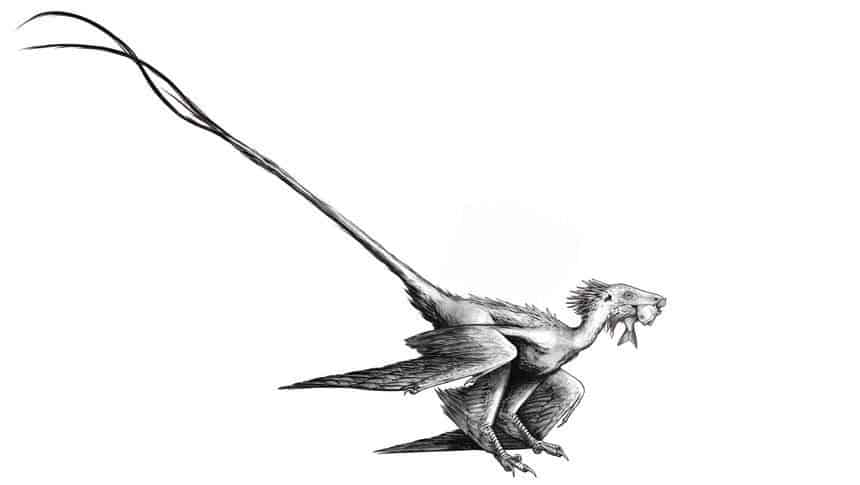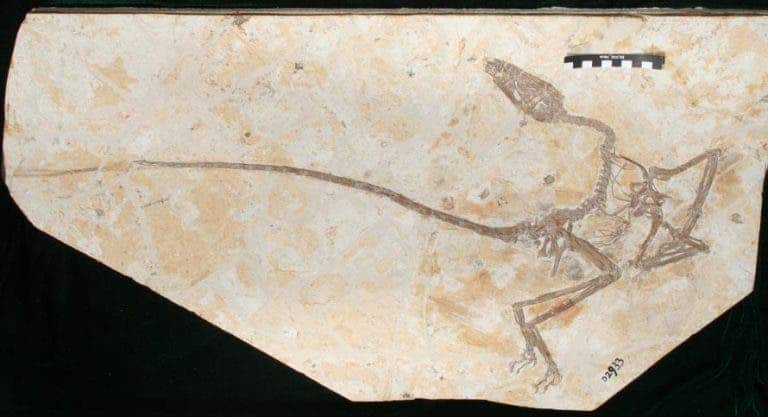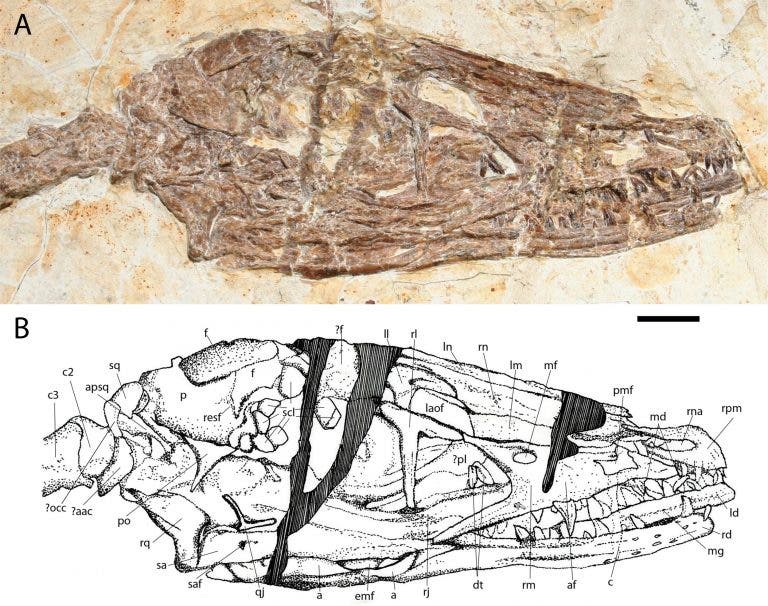Paleontologists have recently described the 120-million-year-old fossils belonging to an ancient extinct species that was a bizarre mix between dinosaurs and birds.

The fossils of the newly reported species, dubbed Wulong bohaiensis (“the dancing dragon”), were first unearthed from China more than ten years ago, in the fossil-rich Jiufotang Formation. The region is thought to be one of the first habitats where dinosaurs and early birds co-existed.
The species, which is twice as old as T. rex, has been described based on a fantastically well-preserved specimen, whose feathers look trapped in time.
“The new dinosaur fits in with an incredible radiation of feathered, winged animals that are closely related to the origin of birds,” said postdoctoral researcher Ashley Poust of the San Diego Natural History Museum and UC Berkeley. “Studying specimens like this not only shows us the sometimes surprising paths that ancient life has taken, but also allows us to test ideas about how important bird characteristics, including flight, arose in the distant past.”
According to the new study, authored by experts in China and the United States, Wulong is one of the earliest velociraptor relatives and potentially a missing link in the dinosaur-to-bird evolutionary transition.

The dinosaur was about the size of a raven, but double its length, and looked like a dwarfish feathered raptor. Its four limbs must have looked like wings, all balanced by a very long, double-plumed tail. Feathered limbs and tails are what we associate today with modern birds.
Although tiny, Wulong had a fierce-looking narrow face and its mouth was littered with sharp teeth. Its bones were small and light, like a bird’s.
Not too long ago, feathers were thought to have appeared exclusively in birds. However, we now know that many dinosaurs species — the ancestors of today’s birds — had a plumage of some sort. In fact, many key avian features may have evolved even before dinosaurs appeared, in a common ancestor.

Writing in the journal The Anatomical Record, the team of researchers claims that the new dinosaur looks very closely related to the origin of birds.
When it died, the dinosaur was a juvenile, based on its bones that had not fully matured. The feathers, however, resemble those of a mature adult, suggesting that they grew much more quickly than bones, unlike modern birds. It’s possible that the young Wulong needed these tail and limb feathers for some yet unknown purpose.
Jehol biota, the richest fossil deposits in the world and the Chinese region where Wulong was found, was probably one of the most biodiverse habitats for early flying animals. It housed birds, bird-like dinosaurs, and even pterosaurs. Around this time some of the first flowering plants began to bloom.
“There was a lot of flying, gliding, and flapping around these ancient lakes,” says Poust. “As we continue to discover more about the diversity of these small animals it becomes interesting how they all might have fit into the ecosystem.”
“It was an alien world, but with some of the earliest feathers and earliest flowers, it would have been a pretty one.”






